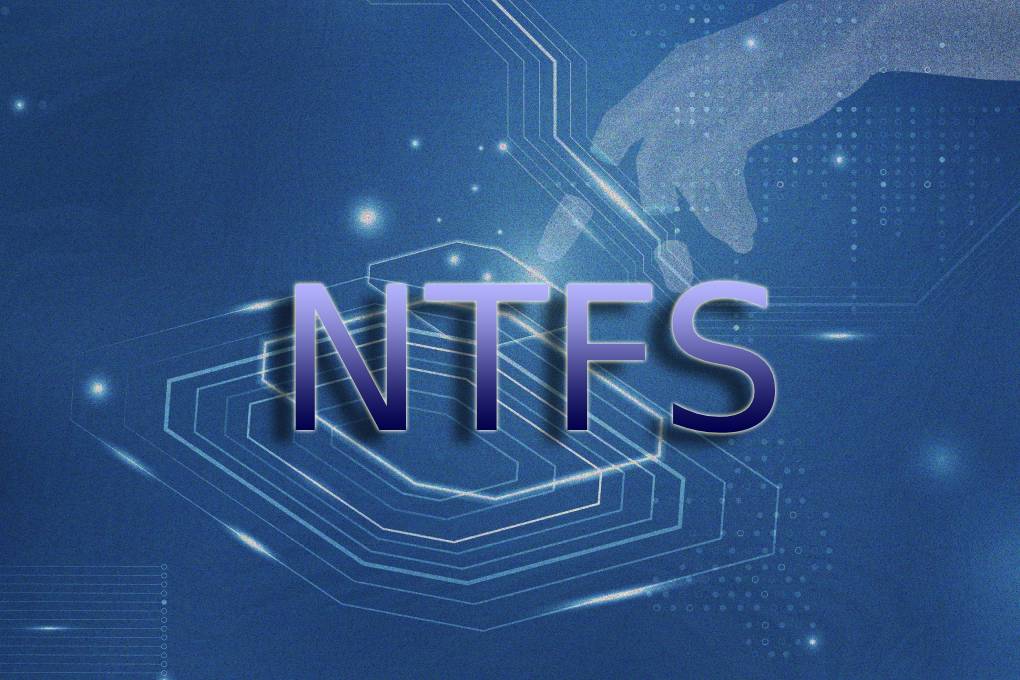NTFS: What Is It, And What Is It For?

NTFS is the most widely used file system on Windows systems, but if you have any doubts about what NFTS is, what it is for, and its strengths and weaknesses, we will explain everything you need to know about the NTFS format and its use.
Table of Contents
NTFS: What Is It, And What Advantages And Disadvantages Does It Have
On any device, all operating systems have a storage unit used to store files, whether they are the system’s own or the user’s files.
File System: What Exactly Is It
Every time you download a photo, move a document or read an email, you use a file system that determines how to store and organize every bit of information in the system’s storage unit.
Each operating system, such as Windows, Android, macOS, Linux, etc…, uses its file systems, each of which has its advantages and disadvantages.
Some file systems are compatible with each other, and others are not at all since, although they take care of the same thing, the way they have to do it can be different.
NTFS File System
NFTS comes from the English “New Technology File System,” which we can translate as “New Technology File System. ” It is the file system that the Microsoft company has used in its Windows systems for many years now, since 2001 exactly.
As its name indicates, it is a “New Technology,” so it replaces older technology, FAT32. The improvements of the NTFS system concerning the previous one are significant.
As the technology advanced, the users’ needs also developed. When it came to filing management, the old systems had some restrictions regarding the size of partitions and files that needed to be corrected.
Microsoft chose the NTFS file system since Windows XP was released in 2001 to manage its system storage units.
This solved some of the old system’s problems, such as being able to work with files larger than 4 GB or creating partitions larger than 2 TB.
There are also improvements to the speed of writing small files and disk fragmentation problems, which caused so many headaches with the FAT32 system.
Advantages Of The NTFS File System
The advantages of using a disk with an NTFS system are many. Although file size management is usually the most valued feature by users, it has many benefits, especially compared to older designs.
Here is a list of some of the more critical NTFS features :
- Disk partitions up to 265 TB.
- File sizes up to 16TB.
- Blocking detection of bad sectors on the disk.
- Reallocation of information from bad sectors to sectors without problems.
- File-level encryption support.
- Ability to assign disk quotas to users.
- System of file and folder permissions at the user level or user groups.
- Ability to use prominent file names.
Drawbacks Of The NTFS File System
If we are to assess the drawbacks of using NTFS, we only find one problem:
Compatibility With Non-Windows Systems
If you use current Windows systems, the use of NTFS will not be a problem since it is 100% compatible with the system.
But NTFS is only fully supported by Windows, so it’s not a good idea if you have to share information to a device with another operating system.
For example, on macOS (Apple) systems, disks formatted as NTFS will be read-only, with no possibility of writing files unless third-party solutions are used.
With other operating systems, such as Linux or Android, the incompatibility is total, so the only way to be able to use a disk or pen drive formatted in the NTFS system is by installing specific software for it.
When To Use The NTFS File System
If you have read the article, you will see that NTFS is closely tied to the Windows operating system.
In the updated version, it is not possible to install Windows 10 on any disk that does not use NTFS, so if you want to use Microsoft’s popular operating system, you have to use an NTFS-formatted disk.
This doesn’t mean that Windows can’t read other formats, but Windows system files must be on an NTFS system to work.
But this does not mean that you can only use the NTFS system to install Windows since, thanks to its characteristics, you can use it in different situations.
If you have an external drive and you are going to use it with files larger than 4 GB in size or if you want to make partitions larger than 2 TB, the system you should use is NTFS, always within the Windows environment.
Although the numbers may seem high at first, keep in mind that any high-quality video file can easily exceed 4 GB in size.
NTFS is also an ideal format to store any backups you may make.
Backups are usually compressed into a single file (.zip, .rar, etc…), which can generate a huge file that is incompatible with other file systems, such as FAT32.
On the other hand, if you have to work with small files, but with thousands of them, moving and copying them between folders can be very tedious if the system is not NTFS since it will manage these files very efficiently.
Conclusion
We have seen that using the NTFS file system is the best solution to improve security, speed, and system features in Windows environments.
As long as you are not going to leave this environment, the choice should be NTFS, but if you have to share information with other operating systems, you should look for an alternative.
For example, the SD memory cards used by most smartphones on the market will not work on the device if they use NTFS as the file format. In these specific cases, it is better to use the FAT32 system, which, although it is ancient and has particular problems, remains the most cross-platform compatible format.
Also Read: What Is Robocheck? Is Robo Check Down | Similar Websites




